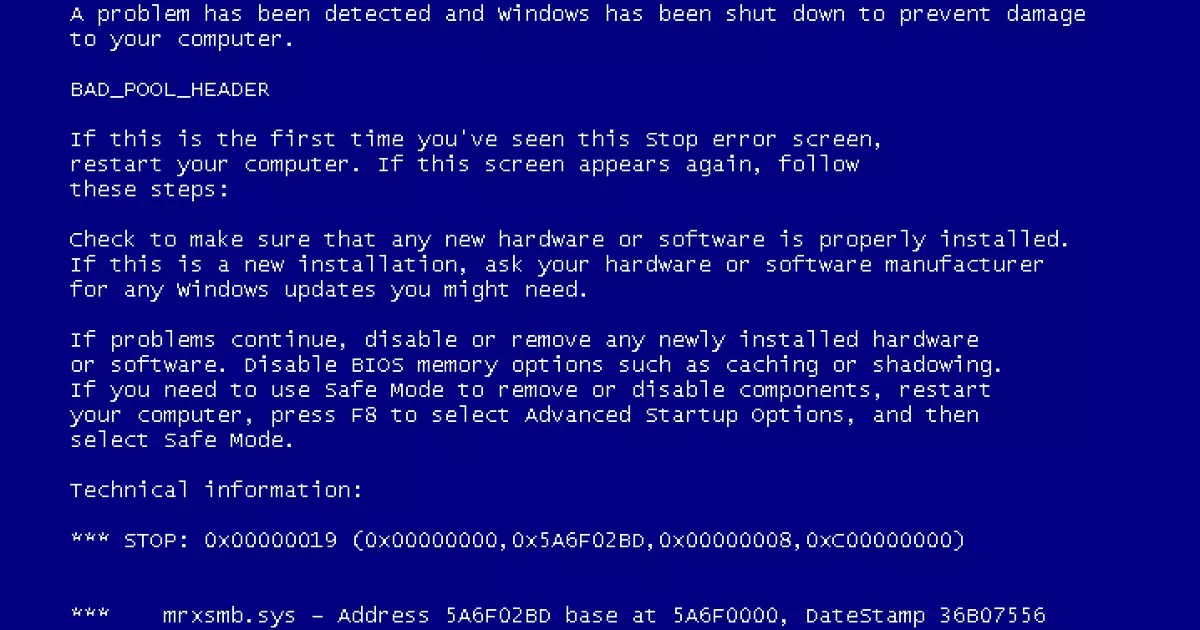In a world increasingly dominated by technology, the emergence of digital folklore is an inevitable and fascinating phenomenon. Just as with ancient myths, modern society has crafted a collective narrative around technological failures—most notably, the infamous Blue Screen of Death (BSOD). My thoughts drifted to a somewhat absurd tradition reminiscent of campfire tales during my time at the UK’s Reading music festival, where participants would, in a bonding ritual, gleefully shout “bollocks” in unison. This ritual was perhaps a way of coping with the unpredictability of festival life, much like how we cope with the unyielding frustrations of technology. The BSOD has transformed from a mere error message to an “icon” of shared human experience, akin to the collective exclamations of those campers.
The Transformation: From Blue to Black
Microsoft recently announced the transition from the ubiquitous BSOD to what they’ve branded as the Black Screen of Death (BlackSOD). This decision, which has already sparked a volley of discussions, marks a significant evolution in the Windows error landscape. David Weston, the VP of enterprise and OS security at Microsoft, stated that this update seeks to provide clearer information to users, allowing them to identify issues more promptly. The description evokes a level of optimism: we might finally achieve a faster resolution to our tech-related woes. However, it also raises a few eyebrows. Is a mere change in color and format enough to alleviate the misery of device failures? Can companies truly render these frustrating experiences more palatable with some rebranding?
The reality, however, is much grimmer. This is not just about aesthetics; Microsoft seems to be responding to larger issues in the tech world, particularly the significant outages experienced by organizations like Crowdstrike. The anguish shared globally when facing these technical failures often feels akin to a digital version of shouting “bollocks” in response to poorly timed mishaps.
The Legacy of Failure Messages
For those of us who have grown up alongside Microsoft’s ever-evolving software, the BSOD became a staple of the computing experience. The screen’s ethereal blue was a harbinger of turmoil, much like a ghostly apparition haunting innocent operations. We can draw parallels to other akin “death messages” in gaming and tech culture, such as the Xbox 360’s red ring of death or the now-anecdotal Sad Mac from Apple Inc. Each of these errors holds a place in our collective memory, forming part of our shared digital folklore.
As humorous and frustrating as these experiences may be, they encapsulate a deeper issue within our reliance on technology. No system is immune to failure, yet the degree to which companies like Microsoft address these pitfalls can impact user trust significantly. By adopting a more constructive approach, like communicating root causes and solutions, Microsoft could help reduce that familiar echo of discontent, where users collectively vent their frustrations.
What’s Underneath the Surface? A Corporate Perspective
However, it’s crucial to explore what lurks beneath the polished surface of Microsoft’s intentions. The release notes for this redesign were filled with seasoned corporate jargon—promises of improved resilience and productivity while navigating the “threat landscape.” It’s clear these words aim to bolster Microsoft’s image as a proactive industry leader capable of minimizing disruptions. Yet, one can’t help but wonder: is Microsoft genuinely prioritizing user experience, or is this an attempt at strategic rebranding amid troubling layoffs and controversies?
The tech giant recently announced job cuts affecting 3% of its workforce—an alarming statistic that resonates with many workers who have experienced corporate turbulence firsthand. Meanwhile, they flaunted a staggering revenue of $88 billion for the fiscal year, raising questions about their true commitment to employees and customers alike. The contradictions between profit margins and user experience highlight a troubling disconnect that may well permeate beyond the layers of corporate communication.
Expectations versus Reality
In this age of rapid technological advancement, how can we navigate the realm of digital errors with a healthy dose of skepticism? As users, we must temper our expectations with the reality that failures are a part of the digital landscape, and corporations like Microsoft must balance their profit motives with genuine customer service. As the BlackSOD enters the public sphere, it’s evident that while the color may change, the challenges of technology, and our collective responses to it—whether laughter, frustration, or resignation—remain constants in our evolving narrative of modern existence.


Leave a Reply